You know what would make it less hot out? More trees! I’m here with a list of my favorite trees that are not only gorgeous native medicinals, but also work to “lower surface and air temperatures by providing shade and cooling through evaporation and transpiration, also called evapotranspiration” according to the EPA. Love that.
I’m making these lists for both of us; for you and me. I’m currently planning out the landscaping for our new place (more on that in a sec) and I want an easy to access reference of my favorite medicinal and native trees, shrubs, and herbs along with the conditions they like to grow in and their ethnobotanical attributes. Are you using these lists too? Make my day and let me know. Comments on this one are open to everyone ;)
Ah, so yes, the new place. We were warned by our wise realtor friend that buying a foreclosed home would be a nightmare. Did we listen? No, we did not. Supposedly we will close by the end of the month - who is to say at this point. All I can do is look at the laughably bad videos we have taken of the property to stoke my excitement in the tougher moments and use that as fodder to build robust garden and home design boards. I think it will help me hit the ground running but at the very least it soothes my impatience in the meantime.
Though my yearning to get to work on the new place is deep, Hayden and I are making the best of this interim period. H has started his new forestry job and I am preparing our Brooktondale home & land for sale. I also planted a small but mighty native meadow at my mom’s house in Philadelphia - more on that next week.
Now for the aforementioned canopy. Can you guess who made the number one spot?
12. Persimmon (Diospyros virginiana)

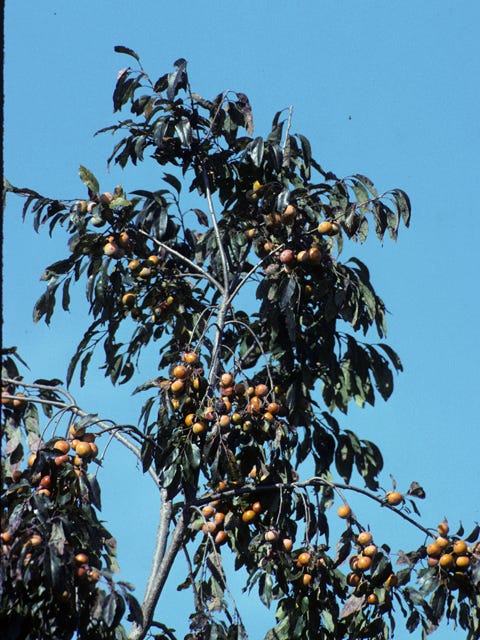
Native Range: from the USDA:
“Common persimmon is found from southern Connecticut and Long Island to southern Florida; westward through central Pennsylvania, southern Ohio, southern Indiana, and central Illinois to southeast Iowa; and south through eastern Kansas and Oklahoma to the Valley of the Colorado River in Texas.”
Growth Habit: I’ve read that in poor soils, Persimmon can be a small, shrubby tree reaching a height of 15 feet. Unfortunately for my fruit loving self, I have never found this to be the case. Just about every Persimmon I have met in the wild has been very, very tall, making its perfect fruits just out of reach. Indeed, Persimmon can reach a height of 100 feet in rich soils. Not to worry, the fruits do drop readily as they ripen, so spreading out a bed sheet and give the trunk a good shake does wonders for a generous persimmon harvest.
Medicine: I cannot stress enough how delicious this fruit is. Perhaps you have had other types of persimmons and felt “meh” about them. Please give our native Persimmon a chance. The fruits will be prohibitively astringent until after the sugars have crystalized with the first frost - turning them into the tastiest fruits in the forest. I’ve made fruit leathers, pies, and just eaten countless out of my basket.
From Washington College: The fruits of Diospyros virginiana were used by the Cherokee, Comanche, Rappahannock, and Seminole for food and beverages. The Rappahannock rolled fruits in corn meal, brewed in water, drained, baked, and mixed with hot water to make a beer. The fruits were dried like prunes for storage.
Medicinal uses ranged from treating sore throats and mouths, indigestion, thrush, and bloody bowels. Persimmon served as an astringent for venereal disease and a wash for piles. The bark was chewed for heartburn. A bark infusion of persimmon, alder, white walnut, and wild cherry was used for toothache. Cold water poured over the bark supported bile production and served as a tea for liver health.
First photo by me, second photo by Lady Bird Johnson Wildflower Center
11. White Pine (Pinus strobus)
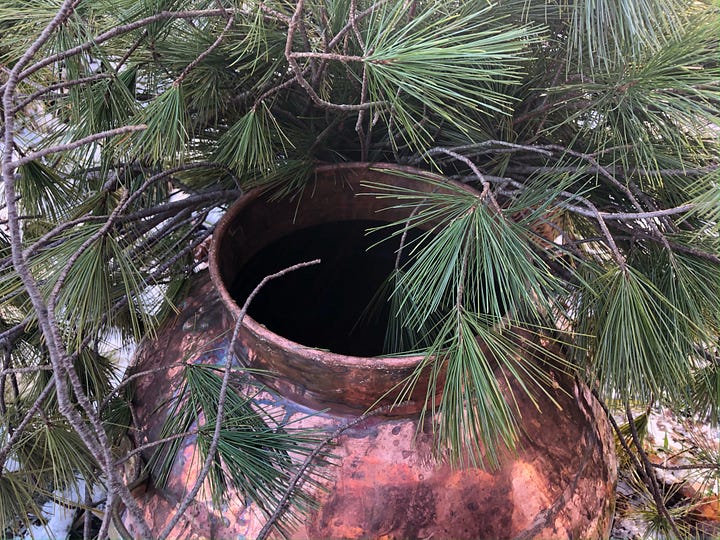
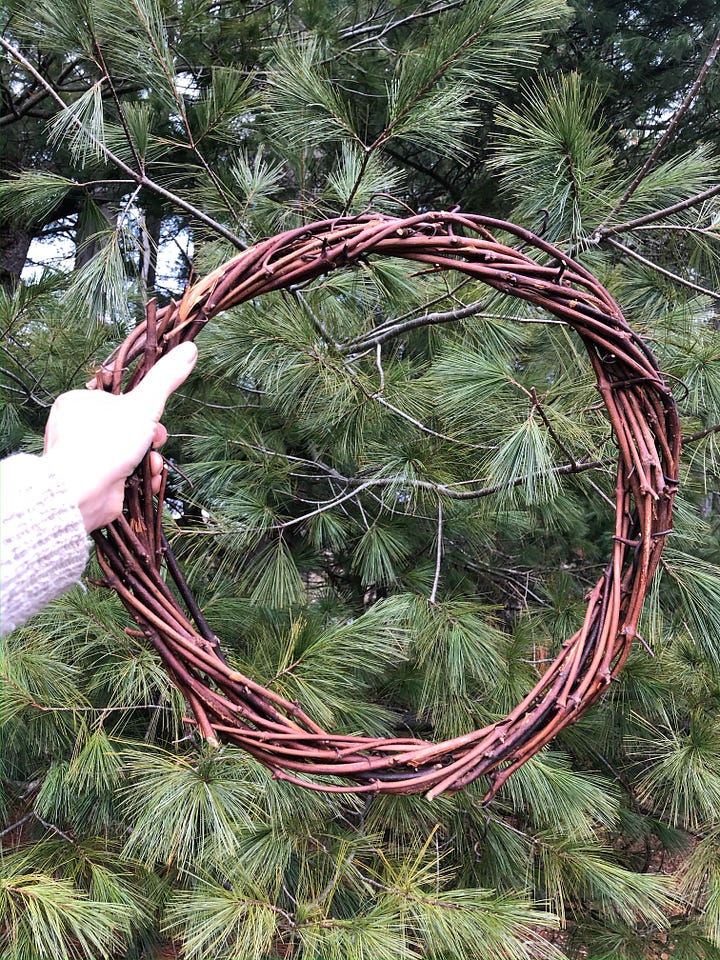
Native Range: White Pine is widely distributed in eastern North American and even dips into parts of Central America. From the USDA:
“Eastern white pine is found across southern Canada from Newfoundland, Anticosti Island, and Gaspé peninsula of Quebec; west to central and western Ontario and extreme southeastern Manitoba; south to southeastern Minnesota and northeastern Iowa; east to northern Illinois, Ohio, Pennsylvania, and New Jersey; and south mostly in the Appalachian Mountains to northern Georgia and northwestern South Carolina. It is also found in western Kentucky, western Tennessee, and Delaware. A variety grows in the mountains of southern Mexico and Guatemala.”
Growth Habit: White Pine is ubiquitous in northeastern forests. It is our tallest conifer in the Northeast, reaching heights of 75-200+ feet tall. Although colonists arriving in eastern North America from Europe did major damage to the old growth White Pines through the practice of mass deforestation, White Pine has made a come back and is one of the most often planted trees in the Northeast due to the importance of its lumber. One way to tell White Pine apart from other Pines is that you can find 5 needles in each cluster and the cones are 6-8 inches long.
Medicine: I love to distill the leaves of pine for an evergreen hydrosol, which I use in skin care and to freshen up indoor spaces. I also harvest the needles to make a vitamin C rich tea - it’s once of the few plants I can harvest from outdoors in the dead of winter to make tea with. The needles are also the key ingredient in my White Pine infused vinegar which I use as a base for my homemade house cleaning products. The resin can also be collected and worked with for its drawing and antimicrobial properties. The resin is very sticky and can be quite messy - the best way I have found to work with it is to add infuse it into a balm and keep dedicated collection tools for the resins as they are very hard to clean. The inner bark is also medicinal but I do not have experience with it.
First photo by me of White Pine going into the distillation pot, second photo by me of a grapevine wreath in front of a White Pine
10. White Oak (Quercus alba)
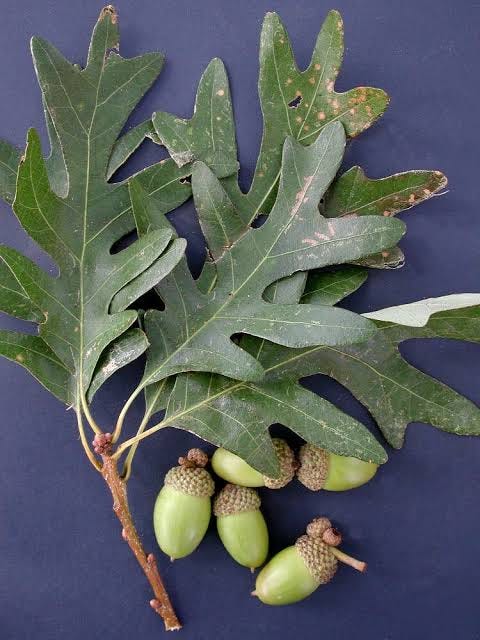
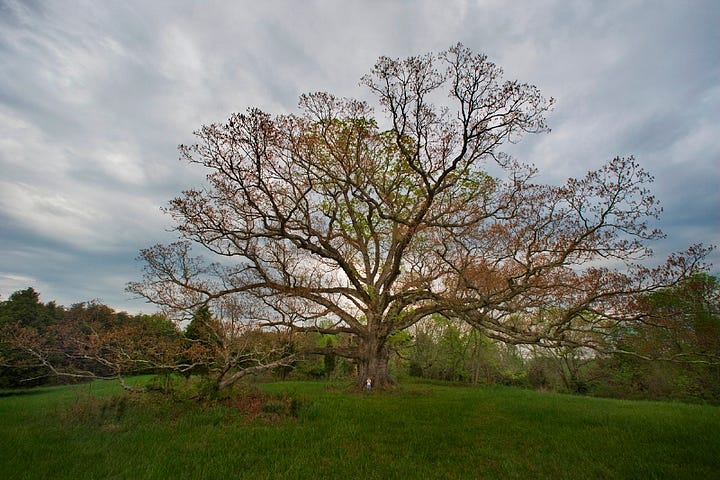
Native Range: Widely distributed through eastern North America.
Growth Habit: White Oak can grow in most soil types. Its saplings are shade tolerant and late successional. It can live in the understory for years before it finds an opening appears in the canopy and has the chance to claim its place atop the canopy. A mature White Oak ranges from 60’-100’ tall. From the USDA:
“The major site factors influencing white oak growth are latitude, aspect, and topography. White oak has the ability to grow on all upland aspects and slope positions within its range except extremely dry, shallow-soil ridges; poorly drained flats; and wet bottom land. It grows best on north and east-facing lower slopes and coves and grows well on moderately dry slopes and ridges with shallow soils. White oak is more abundant although smaller in size on the drier west- and south-facing slopes than on the more mesophytic sites.”
Medicine: Oak is incredibly astringent: it is both drying and constricting. The bark can be powdered and added to tooth powders for loose teeth. It also has applications for hemorrhoids and varicose veins. Energetically, Oak is associated with integrity. My teachers at herb school suggested the flower essence of Oak as additional emotional support for their clients suffering from alcoholism.
Photos by Virginia Native Plant Society
9. Balsam Poplar (Populus balsamifera)
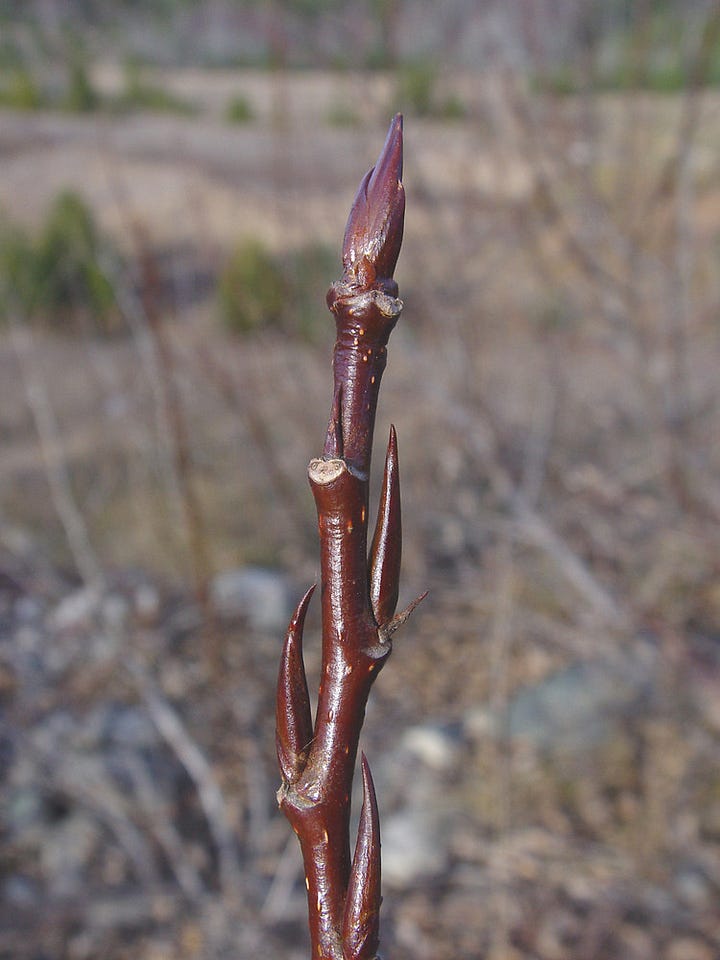
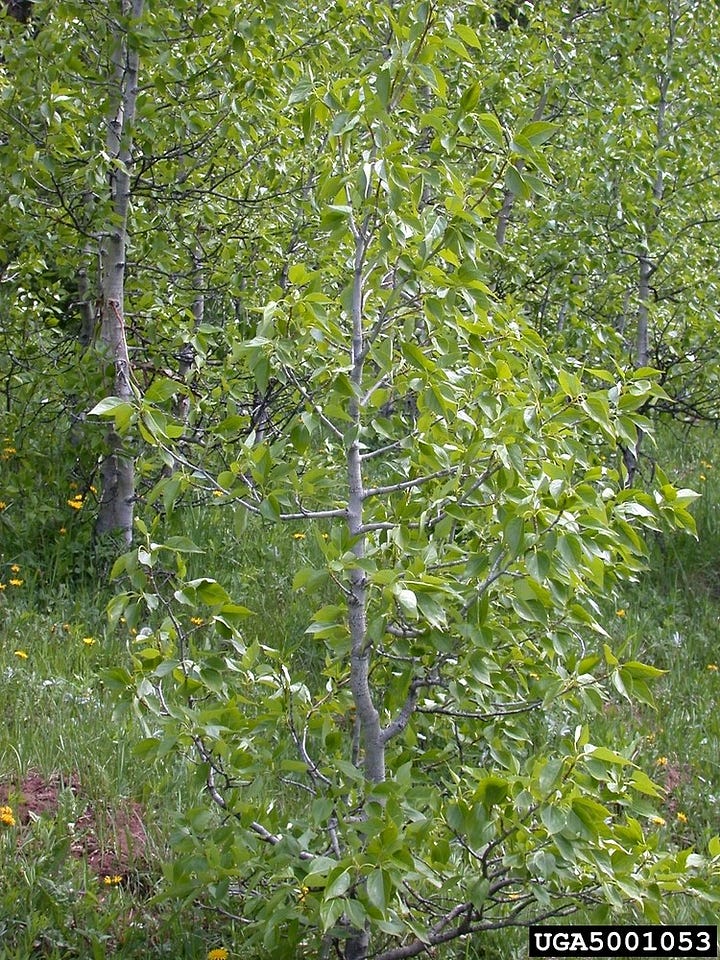
Native Range: Balsam Poplar thrives in the flood plains of the high Boreal zone throughout Canada and Alaska. It can be found throughout New England as well as the upper mid and mountain west.
Growth Habit: Balsam Poplar is an early successional species and can be found as one of the first species growing in disturbed spaces. It also grows in fields, meadows, forests, and forest edges as well as along the banks of rivers and lakes. A mature Balsam Poplar is a forest giant, reaching heights of 75’-100’.
Medicine: The resin of Balsam Poplar buds (and leaves to a degree) is a valued medicine. For the respiratory system it is a stimulating expectorant with warming and drying properties. The resin can also be melted into balms and salves and applied topically for an anti-inflammatory and pain relieving effect on sore muscles.
Photos by Native Plant Trust
8. Black Birch (Betula lenta)
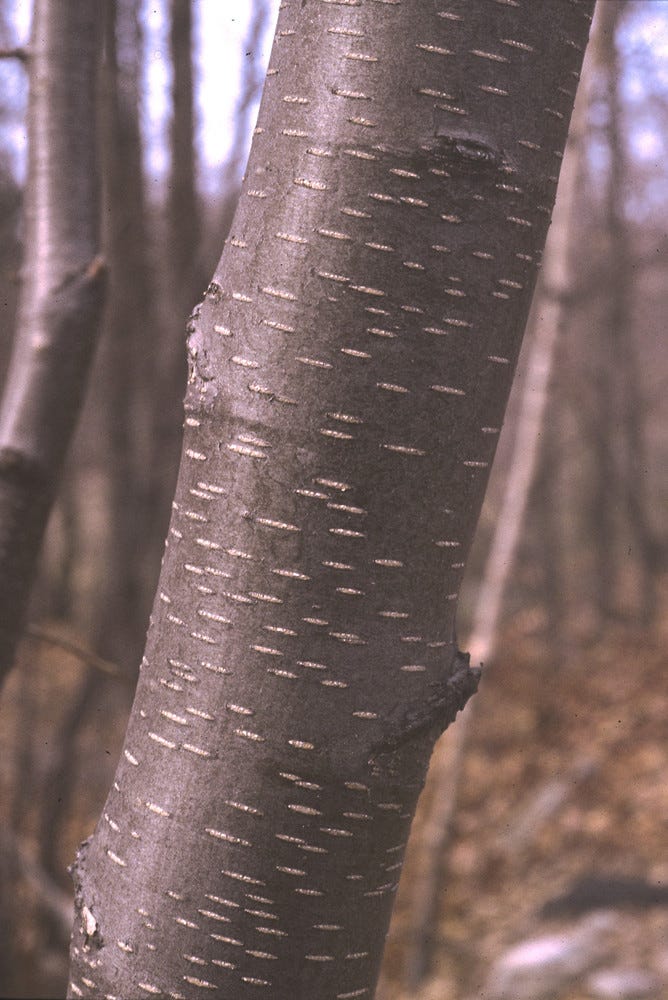
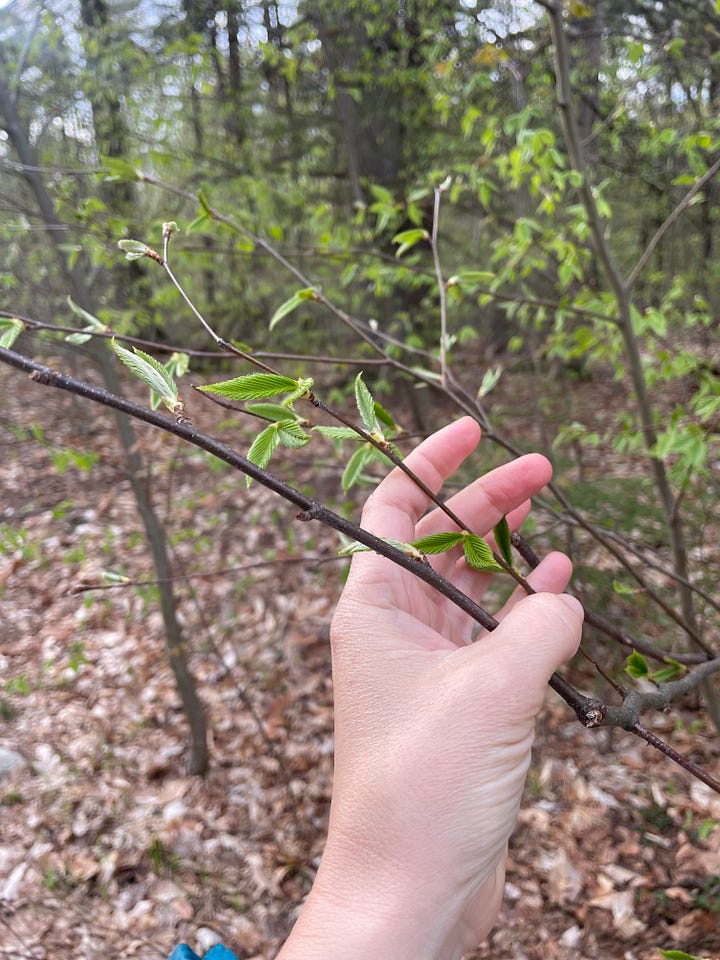
Native Range: Black Birch is primarily a plant of Northeastern North America, though it also grows in the Appalachian mountain range as far south as Georgia.
Growth Habit: Another early successional tree, Black Birch can be found populating newly logged forests throughout New England. This species can be found on many soil types from moist and well drained to rocky mountain outcroppings. I typically work with young Birch trees that are about 12’ tall, but a mature Black Birch is typically 60’ and can reach heights as tall as 80’.
Medicine: Black Birch has a rich history of medicinal and commercial use. This species is the source of the original Birch Beers and an ingredient in early Root Beers. It also contains methyl salicylate, which is a preservative and ingredient in topical rubs for pain relief. I love to make decoctions of Birch Bark twigs and drink it as a delicious, anti-inflammatory, and cooling tea. Black Birch also makes one of my favorite hydrosols, a sweet smelling and toning botanical water. I only collect Black Birch twigs in early spring when the sap is flowing.
Dye: I first clocked the beautiful red/pink color of Black Birch watery infusions when Hayden served it to me as a tea in the early days of getting to know each other at herb school. Most of the time the color of an infusion does not translate to it being a true dye - Black Birch is one of those rare cases where it does. I have particularly found silk as being able to hold the pink shades given by Black Birch bark.
First photo by Native Plant Trust, second photo by me
7. Black Willow (Salix nigra)
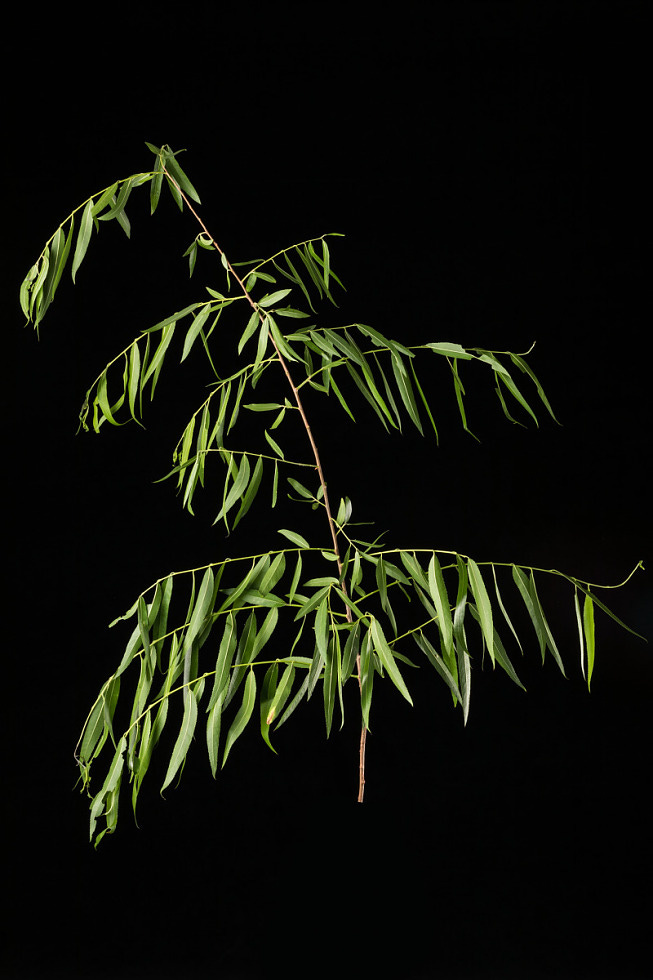
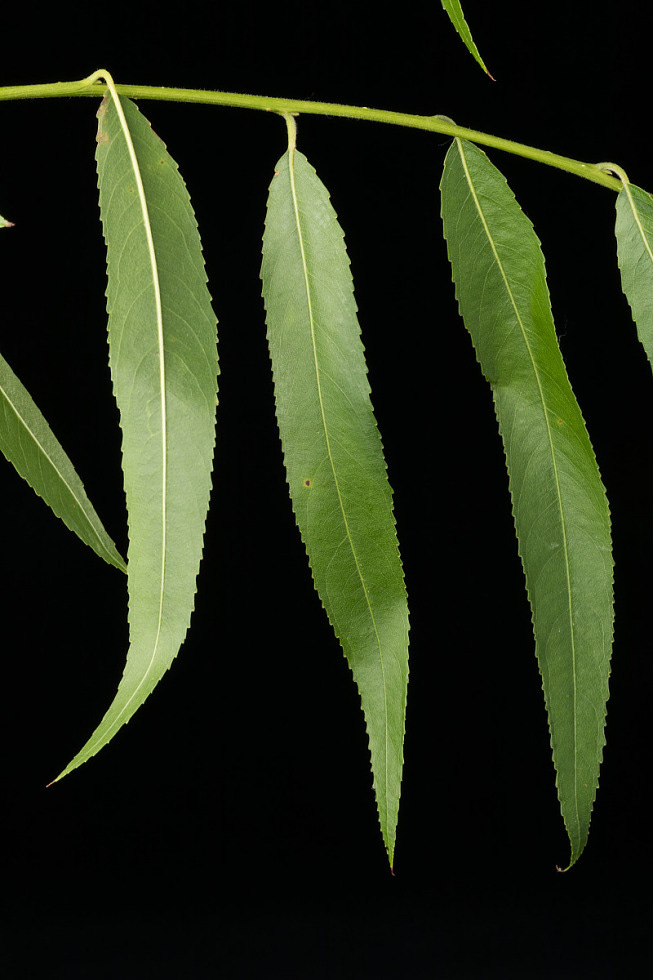
Native Range: Black Willow is widely distributed in North America, all along the east coast and inward throughout the midwest.
Growth Habit: Black Willow is the tallest Willow species in the world, able to reach heights of 80’, though typically growing between 30’-60’. Willow loves to grow in wet soils and can be found on the banks of rivers, lakes, swamps and streams. Willow roots have a reputation for being particularly skilled at finding sources of moisture and can cause problems with sewer lines when planted in urban areas. That didn’t stop me from planting one at the corner of 44th & Locust in West Philadelphia in 2012 and last I checked, the tree is big and beautiful and the sewer below is in tact (as far as I know).
Medicine: Black Willow (and many other species of Willow) famously contain the blueprint for Aspirin. They are rich in a chemical called salicin, which coverts to salicylic acid in the body. In combination with the anti-inflammatory flavonoids in Willow, the result has a pain relieving effect on humans who take a Willow Bark tea or tincture. Willow bark can also be infused in balms for topical relief.
Photos by Smithsonian Gardens
6. Slippery Elm (Ulmus rubra)
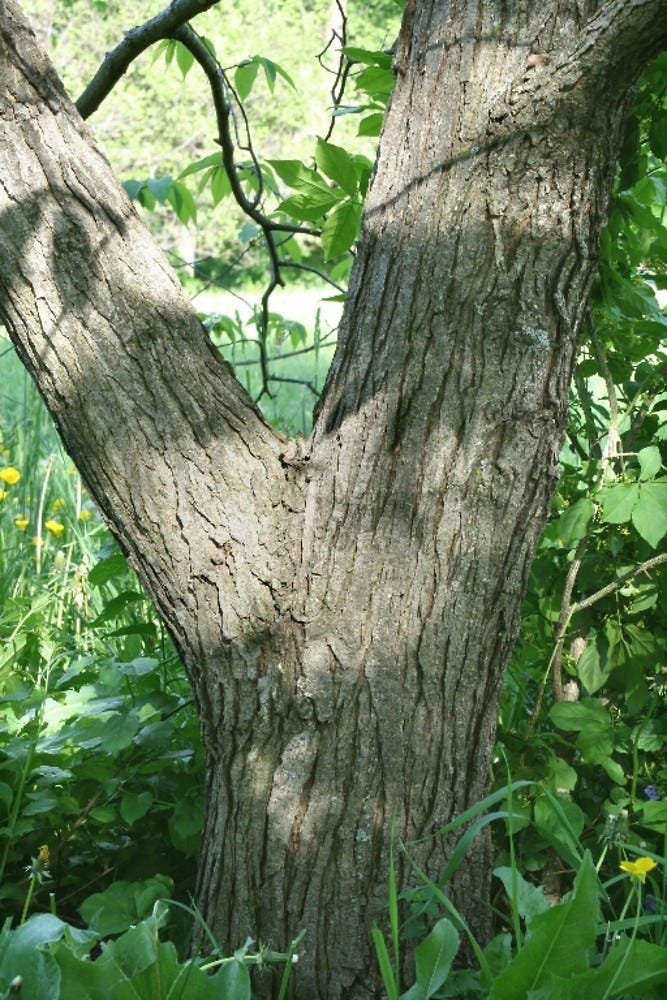
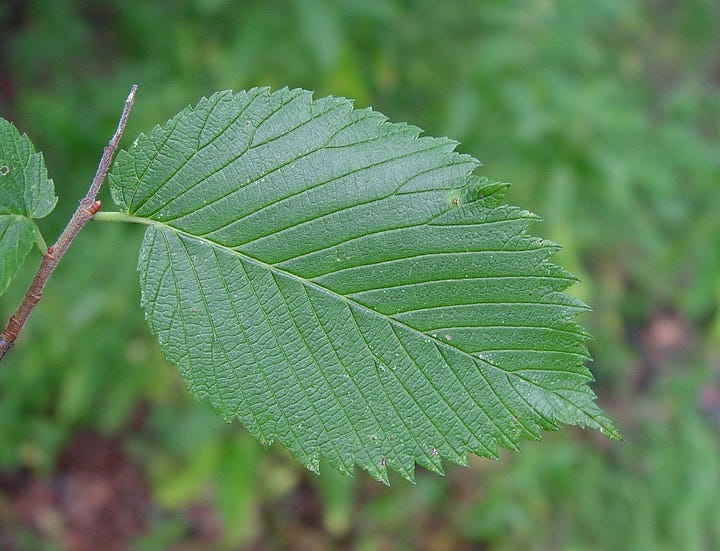
Native Range: Eastern North America throughout the midwest.
Growth Habit: Grows best in floodplains and occasionally grasslands. Typically 60’-70’ tall, though taller specimens have been recorded. Slippery Elm is an endangered species due to both Dutch Elm disease as well as over-harvesting for commercial sale. Harvesting the inner bark puts stress on the tree that can eventually kill it and also makes it even more susceptible to disease. Do not wild harvest this medicine but do cultivate this tree in your yard where you may be able to sustainably work with it.
Medicine: Slippery Elm gets its name from the mucilaginous quality of its inner bark. From the Modern Herbal Dispensary by Thomas Easley:
“Slippery elm is a soothing and nourishing mucilaginous herb that helps absorb acid and irritants in the stomach. It is used internally for irritation of the stomach and intestines, diarrhea (especially in children), and as a mild, nourishing food for weak and debilitated persons.”
Photos by Native Plant Trust
5. Black Cherry (Prunus serotina)
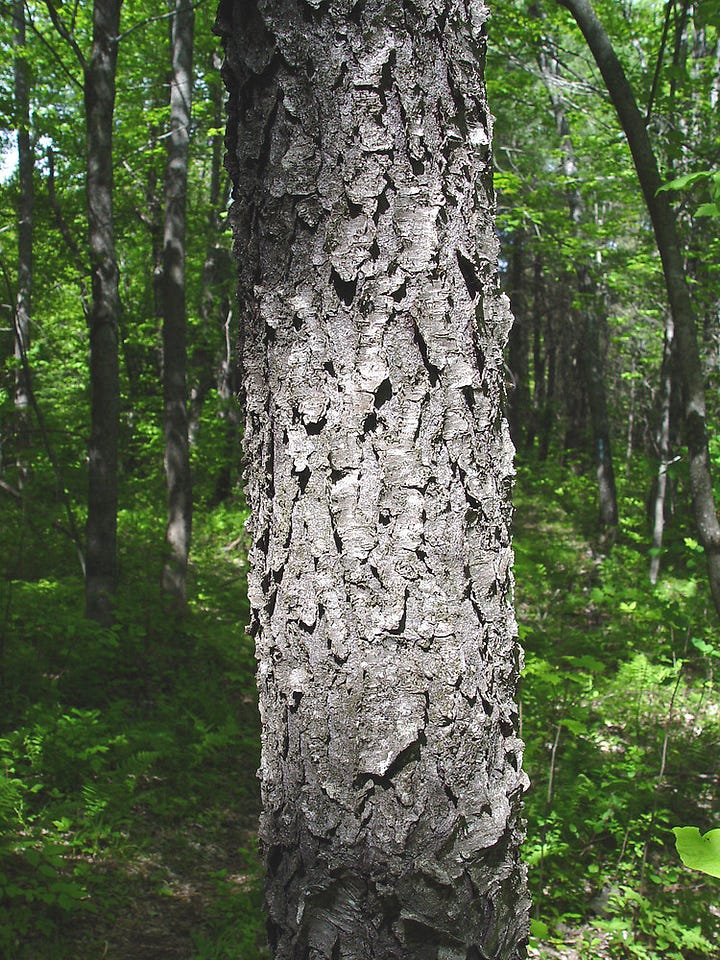
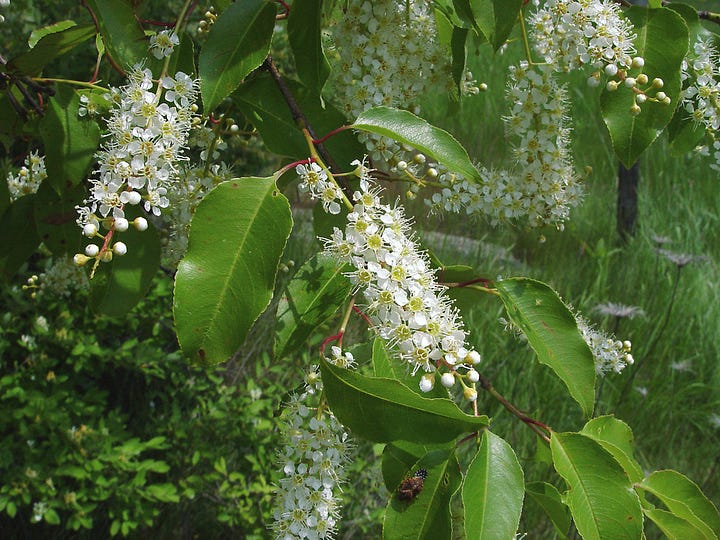
Native Range: From the USDA:
“Black cherry grows in eastern North America from western Minnesota south to eastern Texas, and eastward to the Atlantic from central Florida to Nova Scotia.”
Growth Habit: Black Cherry grows in a variety of soil types but generally prefers a moist and cool environment. In the northernmost edge of its range it can be found growing at sea level whereas at the southernmost edge of its range it is much more likely to be found in high elevations, up to 5000’. Typically 60’-90’ tall.
Medicine: Combined with Lobelia and Licorice root in tincture form, the bark of wild cherry is an excellent medicine for acute asthma flares. From Thomas Easley’s Modern Herbal Dispensary:
“An aromatic and astringent, wild cherry has a long history of use in cough remedies (ever wondered why so many cough remedies are cherry-flavored?). It is a cooling remedy that expels phlegm and soothes and dries out mucus membranes, making it helpful for a variety of respiratory and digestive system problems. It may also help normalize histamine reactions in allergies.”
Photos by Native Plant Trust
4. Basswood (Tilia americana)
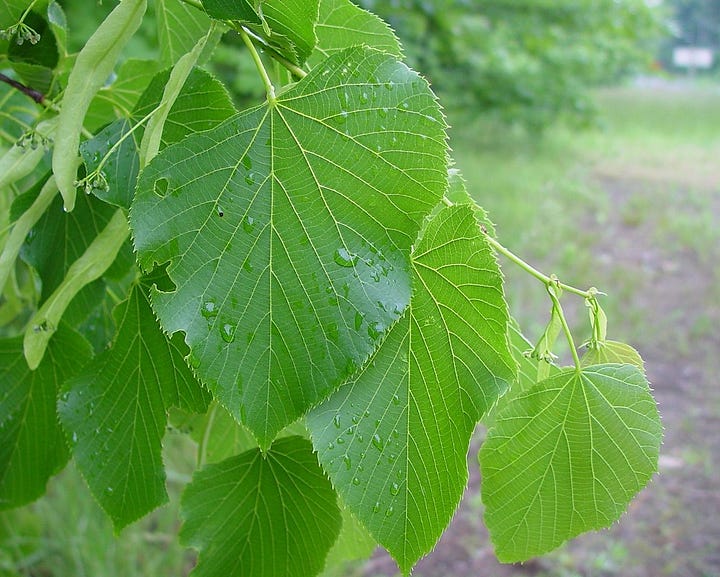
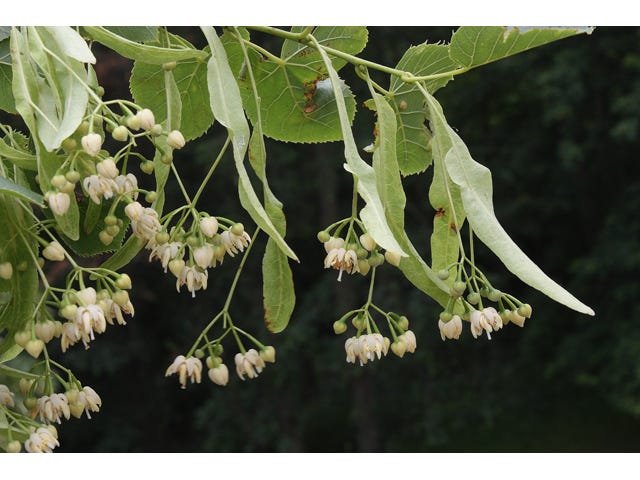
Native Range: Basswood is found all throughout eastern North America and as far west as Texas and the midwest.
Growth Habit: Flood plains and forests are Basswoods preferred habitat, but because of the statuesque profile of the tree and its charming medicine, Basswood is often planted as a street tree and throughout gardens. Typically 75’-135’ tall.
Medicine: Basswood is our native Linden tree. A tea made from the flowers is delicious and soothing to the nervous system. It has a slightly moistening quality. The leaves are edible and very tasty - Basswood has a fitting nickname, Salad Tree. There is lore that peacekeeping meetings were held under flowering Lindens planted in the center of towns for exactly this purpose. When they flowered, they were thought to have a calming effect on the people who stood underneath them.
Photos by Native Plant Trust
3. Sassafras (Sassafras albidum)
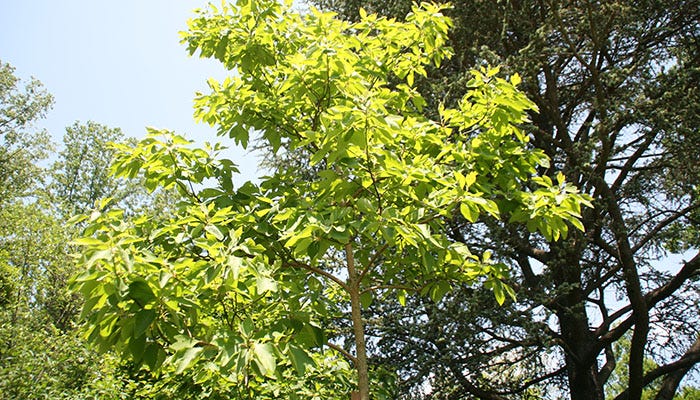
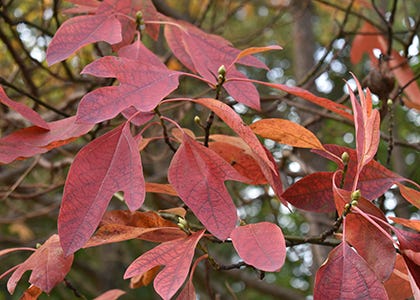
Native Range: Sassafras is widely distributed in the eastern US from southern Maine to central Florida and westward to eastern Texas.
Growth Habit: Sassafras favors sandy loam soils and grows in forests and along forest edges. It is an early successional tree that populates areas after wildfires. Sassafras is a smaller tree, often growing in colonies of saplings with mature trees ranging from 30’-60’.
Medicine: The leaf and bark of sassafras are both medicinal. The leaf is mucilaginous, warming, and is the thickening agent for Gumbo soup. The bark has a cooling effect and is absolutely delicious infused in water or alcohol. With Birch bark, Sassafras bark was an essential ingredient in the original Root Beer recipes. There is controversy that safrole, one of compounds contained in Sassafras root/bark is potentially carcinogenic and it has been banned by the FDA for that reason. On this topic, two of my herbal teachers, Jim McDonald and Thomas Easley, explained to me that there is a big difference between a human drinking a cup of Sassafras tea and a rat being injected with pure safrole. The difference is the dosage, eh? That said, I am not up to date on the latest safrole literature out there. It’s worth noting that the leaves do not contain safrole and have a long history of use as food.
Photos by Cornell Botanic Gardens
2. Black Walnut (Juglans nigra)
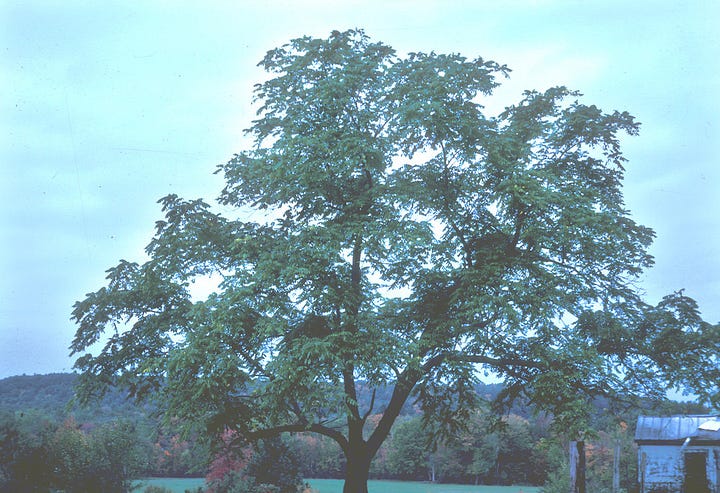
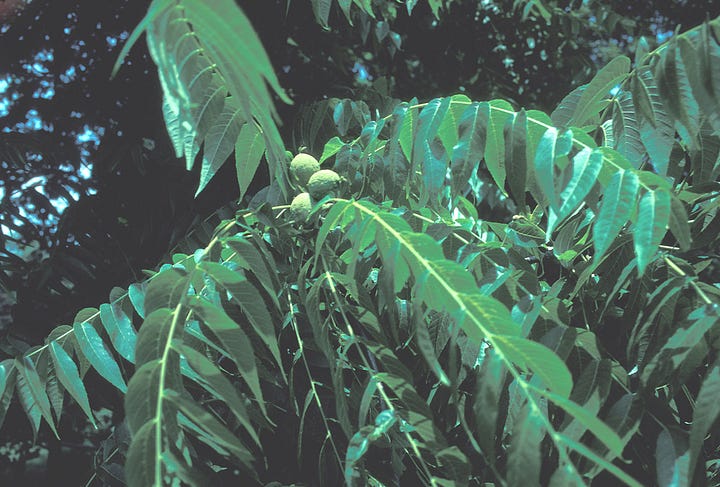
Native Range: From the USDA:
“Black walnut typically grows as scattered individual trees or in small groups throughout the central and eastern parts of the United States. Although it is found on a variety of sites, black walnut grows best on good sites in coves and well-drained bottoms in the Appalachians and the Midwest. Its natural range extends from western Vermont and Massachusetts west through New York to southern Ontario, central Michigan, southern Minnesota, eastern South Dakota and northeastern Nebraska; south to western Oklahoma and central Texas; excluding the Mississippi River Valley and Delta, it ranges east to northwestern Florida and Georgia. On the western fringe of its range in Kansas, walnut is fairly abundant and frequently makes up 50 percent or more of the basal area in stands of several hectares”
Growth Habit: Typically this tree reaches heights of 70-80’ but in ideal conditions can grow as tall as 150’ with an 8’ trunk diameter.
Medicine: Black Walnut hulls are antifungal and antimicrobial while being quite gentle. It is used for digestive disturbances as well as applied topically for athlete’s foot and ringworm.
Dye: Black Walnut hulls produce beautiful browns on vegetable and protein fibers. Because of the highly tannic nature of Black Walnut, no mordant is needed to fix the color on the fabric.
Photos by Native Plant Trust
1. Hawthorn (Crataegus mollis)
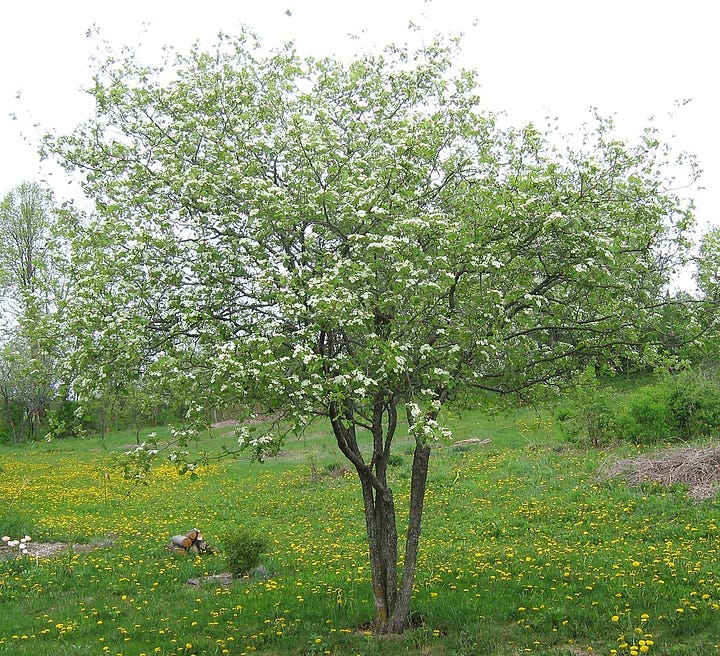
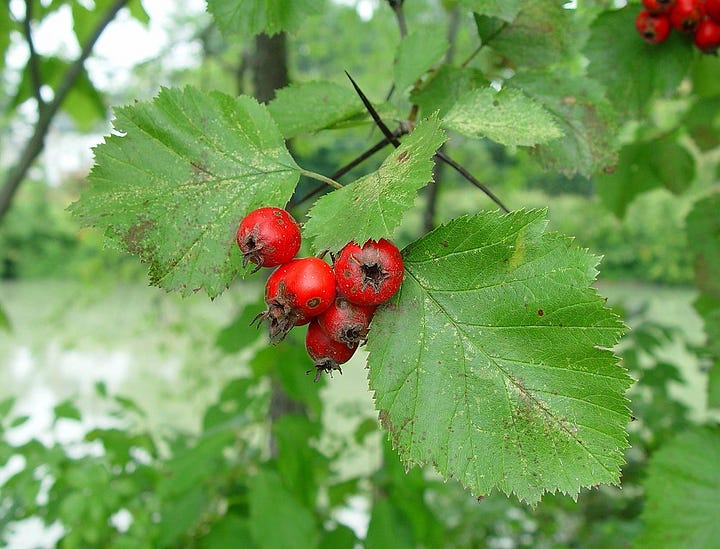
Note: I named the Quebec Hawthorn here, but the medicine applies to all Hawthorn trees.
Native Range: Eastern North America.
Growth Habit: Hawthorns are a small, almost shrub like tree with a scrubby habit. They tolerate a wide variety of soil conditions and can be found at both altitude and near sea level. Depending on the species, Hawthorn trees range from 15’ to 50’ tall.
Medicine: From Thomas Easley’s Modern Herbal Dispensary:
“Studies around the world have confirmed that hawthorn berries improve the tone of the heart muscle, improve oxygen uptake by the heart, improve circulation in the heart, energize the heart cells, and dilate blood vessels in the extremities to reduce strain on the heart. Thus, hawthorn berries are an excellent herbal food for building up the heart muscle. It needs to be taken on a regular basis for best results. Generally, it improves cardiac function in heart disorders with or without chest pain. Besides benefiting the heart, hawthorn helps reduce stress and improves digestion.”
Additionally, Hawthorn flowers make a wonderful tea for encouraging peripheral circulation.
In Celtic folklore, Hawthorn trees are sacred trees inhabited by faeries. They were not cut down out of respect and for fear of resulting misfortune. If you love folklore, do a deep dive on the Hawthorn tree.
On our land in Brooktondale we have many Hawthorns growing throughout the wet meadows and fields. One July day in 2019 a group of 10 or so of us were sawing down an understory of invasive Bush Honeysuckle brush to make way for a fire pit and gathering area. The brush was tall and dense and we instructed everyone to only cut the honeysuckle and leave everything else. We all had our heads down for an hour or so, working to cut away the honeysuckle. When we finally looked up, we realized we had cut away all the Honeysuckle and revealed a ring of Hawthorn trees forming a circle around the area where we intended to build our fire pit. It was such a blessing! In the years to come the Hawthorn trees, now with so much more room to breathe, grew taller and bore fruits that witnessed many more gatherings under its canopy.
Photos by Native Plant Trust
Honorable mentions to:
Pawpaw
Maple
Redbud
Juneberry
Take this email to your local nursery and begin growing your own medicinal forest of native trees. Did I miss one you love? Feel free to tell us about it in the comments.





What a wonderful list. I have planted at least 20 hawthorns over the last few years. The white pines we planted years ago survived the deer browsing and went from 5 ft to 25 feet in 'no time'!